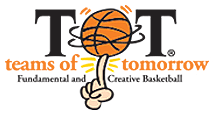In the Teams of Tomorrow program, preschoolers are moving their bodies for 45 minutes and learning new concepts all at once. So, what about that is so special? We all know that being physically active has countless benefits – but is there a correlation between physical activity and brain growth?
Simply put: yes. An article from The Guardian in June 2016 noted that physical activity can boost memory, improve concentration, improve mental health, enhance creativity and slow cognitive decline.
The Hippocampus
One area of the brain that receives a large amount of benefits from physical activity is the hippocampus. According to the article, “Well-controlled experiments in children, adults, and the elderly shows that this brain structure grows as people get fitter. Since the hippocampus is at the core of the brain’s learning and memory systems, this finding partly explains the memory boosting effects of improved cardiovascular fitness.”
Not only that, a larger hippocampus allows for more complex thinking, according to a study by the University of Illinois at Urbana-Champaign.
Physical Activity and the Brain – Great Companions!
A study from the University of Exeter showed that learning basic movements boosted the brain as well as academic performances. Older studies also show that exercise increases blood flow to the brain, which is needed for heightened alertness and focus, which makes it easier for children to learn.
That same study noted that regular physical activity can “help develop important life skills, and boost self-esteem, motivation, confidence and wellbeing. And it can strengthen/foster relationships with peers, parents, and coaches.”
Structure is Good
But, it’s important that preschoolers participate in more structured physical exercise as opposed to simply playing on the playground to get even more benefits of physical exercise and brain activity. In March 2017, an article published in the Early Childhood Education journal announced that preschool-aged children were not meeting national physical activity recommendations.
In the study, two groups of preschoolers were tested: those with free play and those who participated in a structure movement session. Preschoolers who participated in the movement sessions replaced free play with the structured physical activity two times a week. Results showed that those in the movement sessions had less sedentary behaviors.
Bring on the Benefits!
Making the decision to allow children to participate in physical activity at an early age can have positive long term effects building the brain and how the brain operates.
So, at the end of the day, physical activity of any kind has a positive influence on bodies- both mentally and physically.

